
Author: Samarth Upponi, Director and Subbu Swaminathan, VP Commerce Company India Tech
With the pandemic forcing all of us to be locked at home since 2020, E-commerce growth has accelerated like never before in enabling convenience to shoppers from the comfort of their homes.
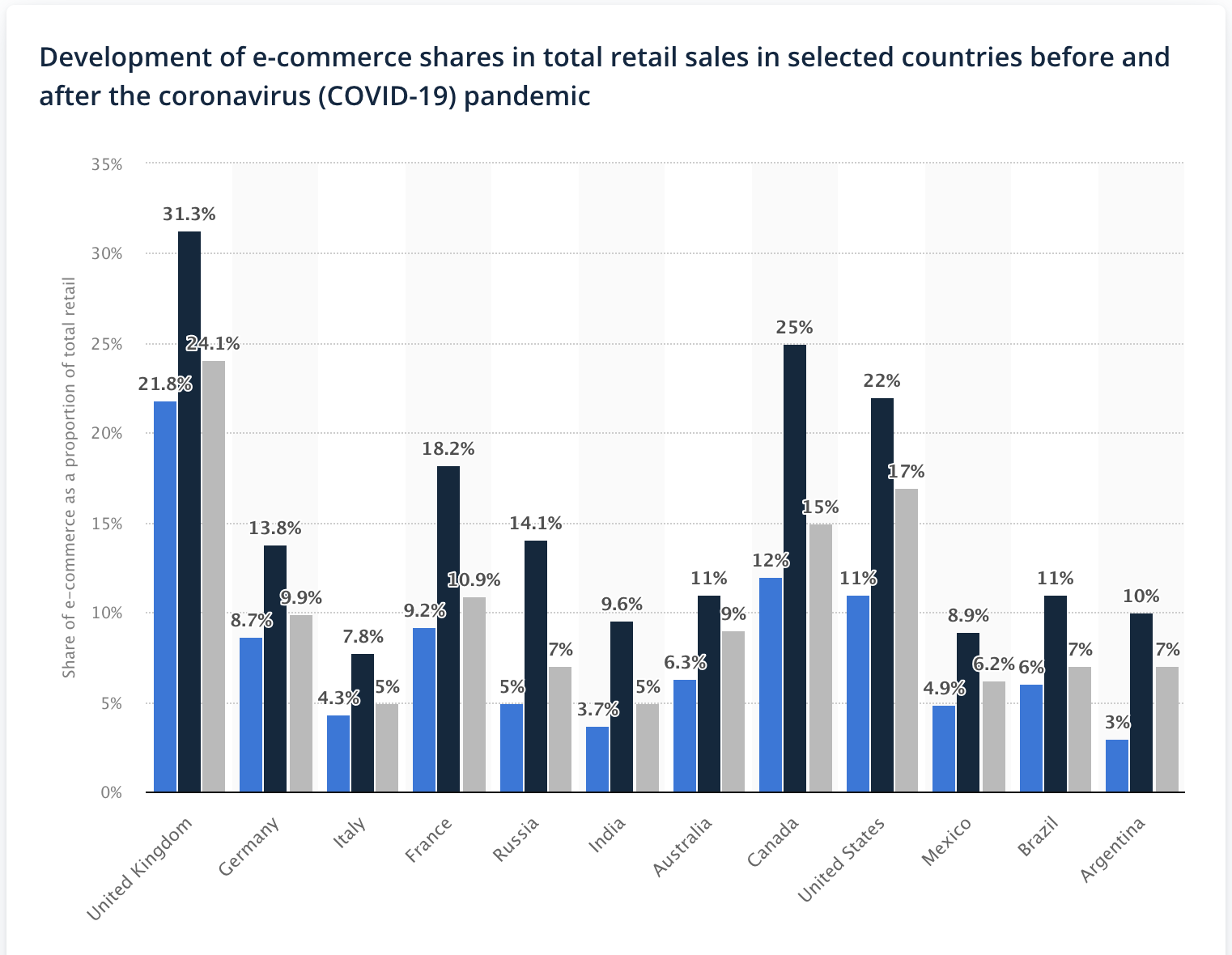
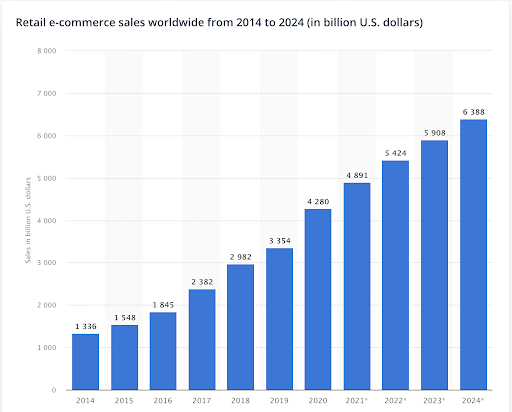
Source: Statista
Data being the new oil, E-commerce has been one of the industries where a massive amount of data is being collected, analysed and decisions made every second.
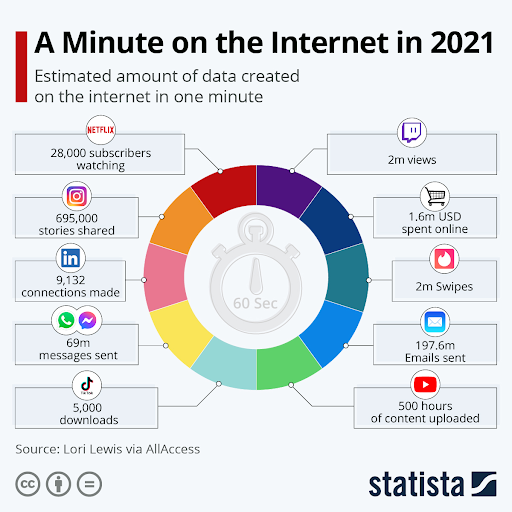
While at the beginning of online shopping it was easy for a team of analysts to do reporting and analytics with traditional Business Intelligence, gone are the days for waiting to get a report and act. Today, AI has replaced many aspects of E-commerce decision making for businesses, merchants and shoppers, applying real-time machine learning algorithms on the data and enabling faster decision making benefitting all the stakeholders.
When we look at E-commerce, there are three major aspects of a journey the shopper takes to get what he or she wants.
· First, ‘Search & Discovery/Recommendations’ becomes critical to find what one is looking for in the desired price range, quality, quantity and other attributes such as size, shape, colour, etc.
· Second, once the decision to buy the product(s) is made, the ‘Checkout & Payments’ experience becomes another major touchpoint in confirming the intent to buy.
· Last but not the least, the whole ‘Supply Chain & Logistics’ which forms the backbone in translating the products showcased on the site reaching to customer’s hands orchestrated from the source (Sellers, Warehouse), intermediary (Distribution/Transportation/Delivery Hubs) and finally through the delivery agents.
AI now has helped tremendously in all these aspects of the E-commerce journey. Let’s look at some of the examples where companies have adopted AI to leapfrog decision making in real-time and impacting the overall customer experience.
Search & Discovery/Recommendations
Voice search and conversational AI allows searching of products using voice on the site has started to pick up, offering a personalized shopping experience with convenience and time efficiency to shoppers. Advancements in smart speakers like Alexa, Google Home & Siri combining the power of NLP and Machine Learning have increased the adoption of voice search by shoppers. This will continue to explode with Google & KPMG predicting 270% YoY growth in voice search.
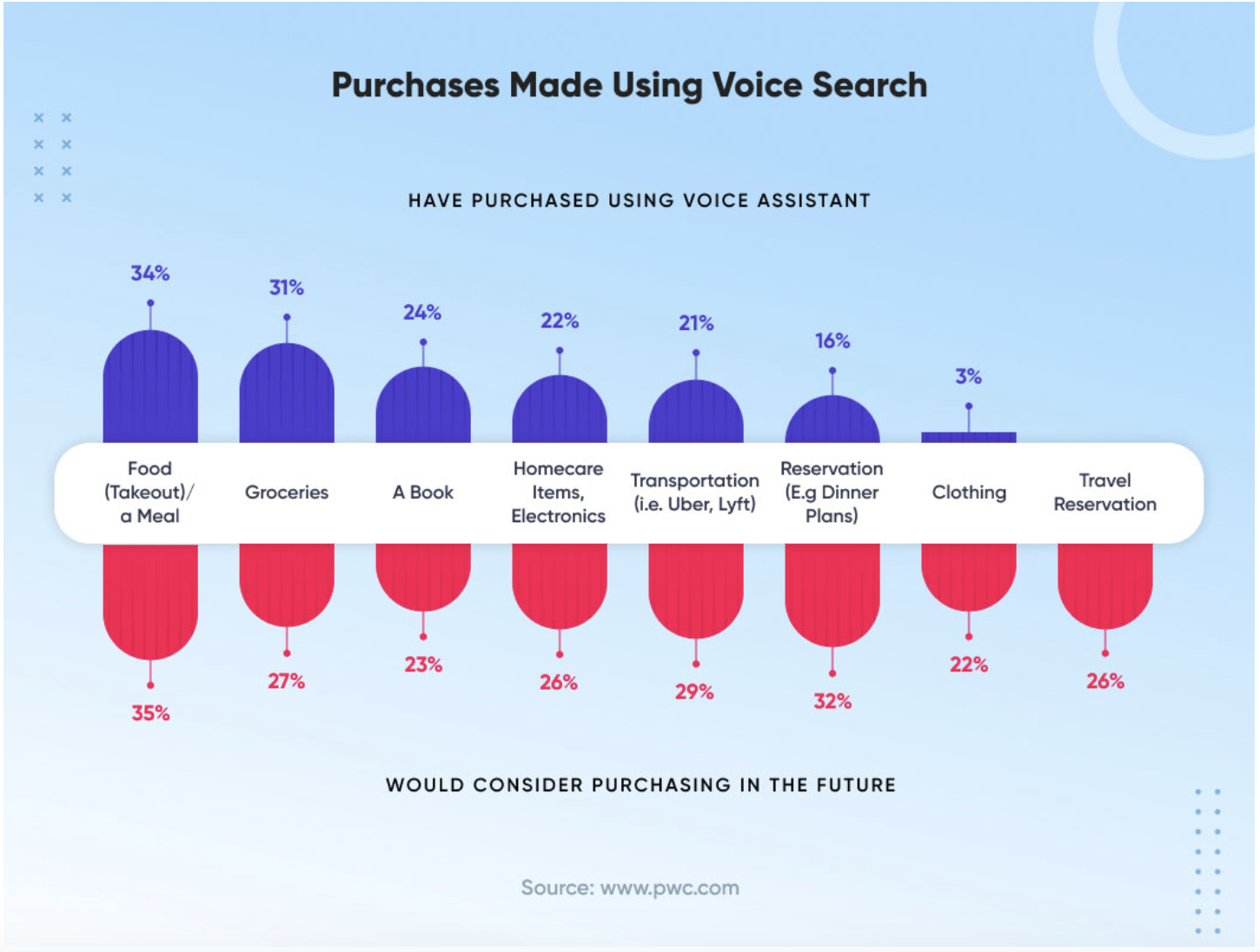
Conversational commerce is where we are seeing a lot of action in recent times. Conversational commerce was a term that was coined in 2015 by Uber’s Chris Messina and is increasingly becoming popular. At a rudimentary level, it refers to the intersection of conversations with shopping. Conversations can be text-based. But the trend is fast moving towards voice-based conversations.
To quote Chris Messina, “Conversational commerce is about delivering convenience, personalization, and decision support while people are on the go with only partial attention to spare.” One can easily see why conversational commerce is the next frontier for AI.
A major speedbump in widespread adoption was the inherent challenge with language models. Google recently released LaMDA (stands for “Language Model for Dialogue Applications”), which can engage in a free-flowing manner on a wide range of topics. LaMDA can pick up nuances in a conversation that are extremely hard for other language models to detect. With such breakthroughs in language models, we can expect acceleration in conversational commerce. Use cases range from solving customer complaints to getting answers for FAQs, but also in recent times, including discovering the right product for one’s need.
While every major e-commerce provider today includes chatbots as one of their major customer touchpoints, the holy grail is when customers can complete their entire shopping journey using only voice. With evolutions in voice assistants and smart speakers, we are already seeing the major players experimenting in this space. It is only a matter of time before each one of us will experience the full power of conversational commerce in our palms.
A simple search is useless unless the customer gets to see what he or she likes to buy, based on their preferences. This is where ‘Recommendation Engines’ plays a critical part in translating the intent to buy and converting it towards the cart/checkout.
With the help of AI, companies can build a series of intelligent algorithms and ranking systems that continuously learns about customer’s shopping behaviour on the site and can closely predict what their preferences are. This is not a mere guessing game, but AI dives into a plethora of data about the customers from their search queries, browsing and purchase history, items on the cart, social media footprint, location, time spent, user persona and other customer segment/demography related data to recommend relevant products that the customer can buy. With AI, the recommendation becomes personalized to each customer’s need and in turn drives the buying decision faster, thus enabling higher profits, increased customer loyalty, higher conversion rates and average order value.
As Marc Lore, one of the respected E-commerce industry leaders predicts, the days of AI taking over the entire aspect of the customer journey and making it seamless is not far off. It is just a matter of time with the advent of AI, a day is not too far for a shopper who just has to wish for what he or she wants, and it will be delivered in no time matching exactly their personal preferences.
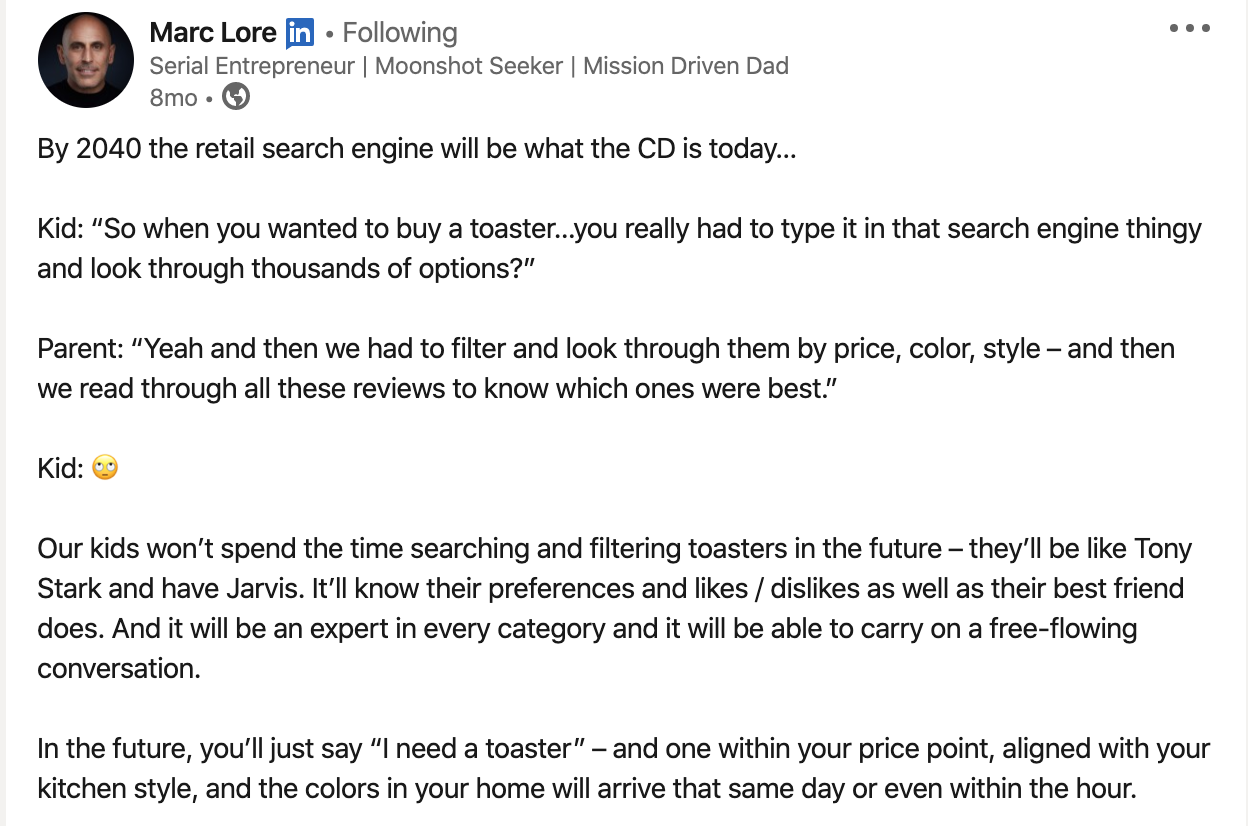
Checkout & Payments
The focus here is to offer a seamless and convenient Checkout & Payments experience to shoppers with minimal friction. E-Commerce companies have adopted several strategies enabling faster checkout like ‘Buy Now’, provision to store/validate payment methods in real-time and seamlessly integrating with many banking payment instruments to complete the process efficiently.
In payments and the financial aspect of the journey, the major challenges here is primarily around ensuring safety & security from any potential fraud and the loss for any of the stakeholders involved. When it comes to safety, fraudulent transactions are a big problem for merchants, consumers, banks and e-commerce providers. With massive amount of data breaches every day, it is critical in shopping journey to detect and prevent any potential financial loss due to frauds as the avenues keeps increasing for the perpetrators to game the system. This also opens up a massive breach of trust for all the players involved.
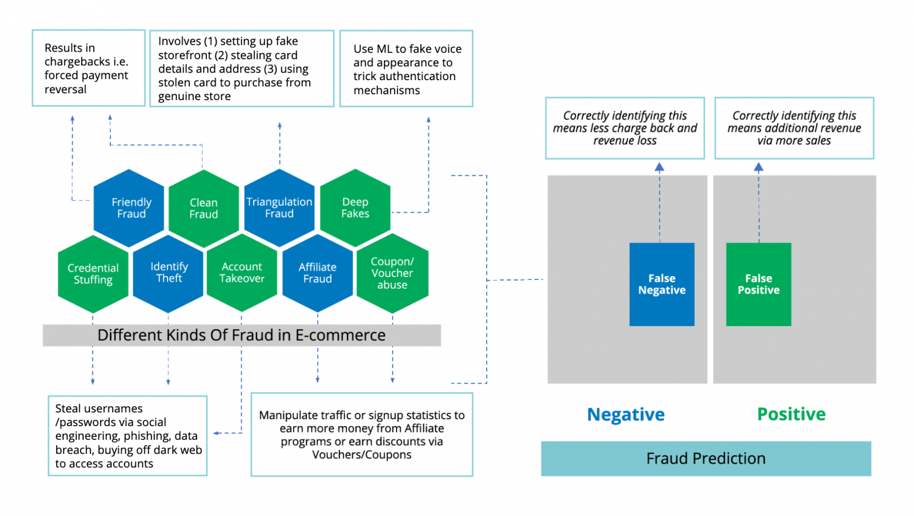
Source: Thoughtworks
Using AI, it is now possible to flag unexpected or unusual transactions, thus preventing fraud. There have been advancements in risk assessment tools aiding to fraud detection and prediction that can effectively prevent and reduce fraudulent transactions. With a scale of millions of transactions per second, it is impossible to detect patterns with an analyst and this is where AI coupled with Machine Learning helps in fraud detection with speed and adaptability.
Ocado, UKs online supermarket which is one of the world’s largest online grocery retailer have successfully implemented ML-based models and algorithms that predict in real-time and provides the likelihood of fraud thereby improving Ocado’s prediction of fraud by a factor of 15x .
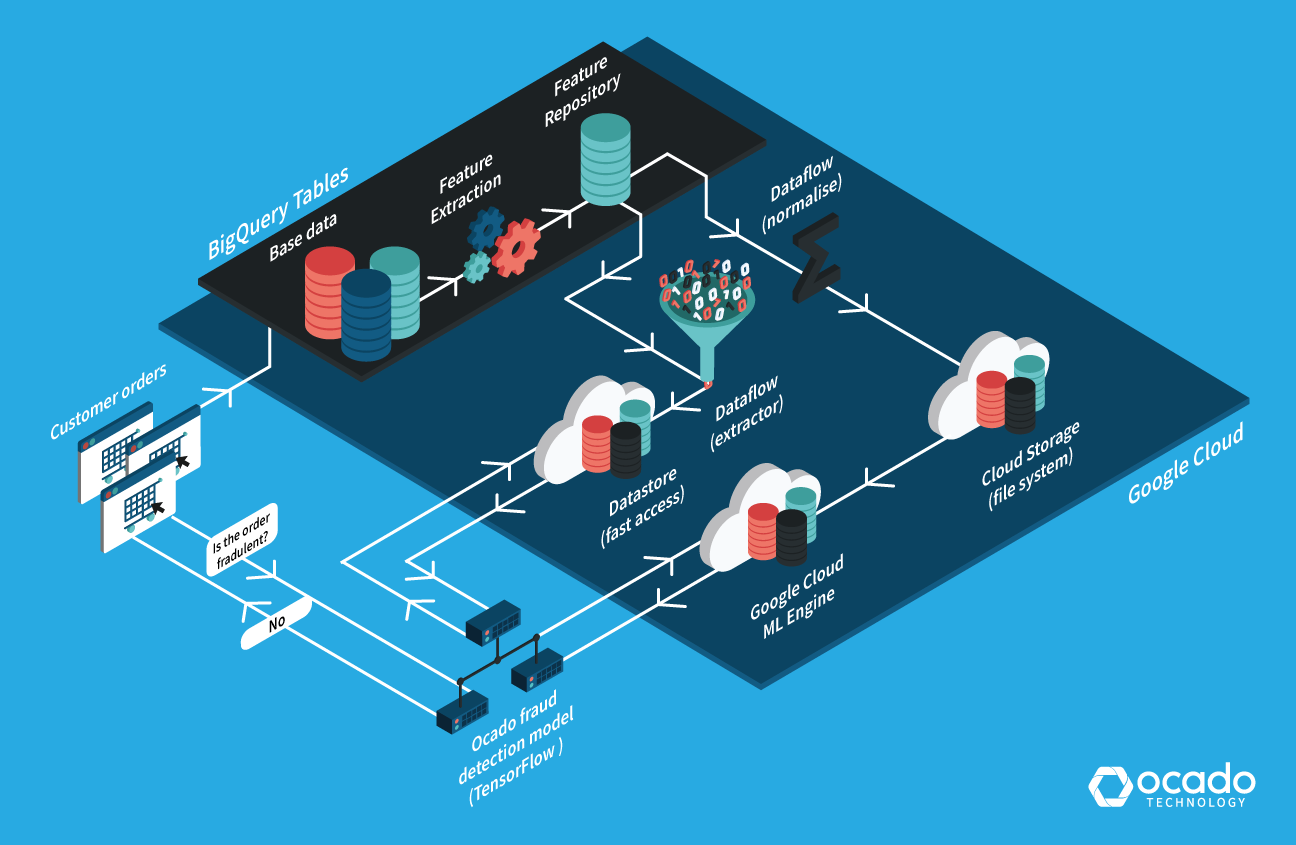
Source: Ocado Technology
On the payment convenience front, there has been a quantum jump in accuracy and adoption for seamless authorization. Many providers are accelerating the adoption of voice-based and computer vision-based AI-driven payment authorization systems. One such example is how Rakuten Pay has been able to adopt facial recognition technology in offline shopping to provide a frictionless checkout experience to shoppers. All of this has been possible with advancements in deep learning and convolutional neural networks. You can watch the demo video here:
Supply Chain & Logistics
Another area of AI-driven innovation that has seen tremendous progress in recent times is in the space of supply chain & logistics. AI helps in the automation of entire warehouse processes from inbound, storage, pick, pack & outbound combining technologies like IoT, Computer Vision and Robotics leading to increased productivity, improved accuracy & safety. Coupling AI with another powerful technology named LiDAR (which stands for Light Detection And Ranging), Warehouse bots are now able to plan the most efficient routes within a large warehouse, in real-time!
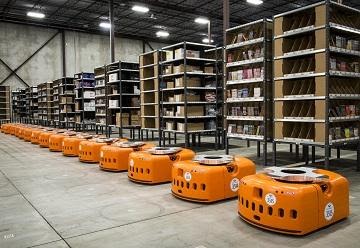
In last-mile delivery, Unmanned Ground Vehicles (UGV) and Unmanned Aerial Vehicles (UAV or more commonly known as “drones”) are areas where AI is applied to bring in various delivery optimization, increasing speed and efficiencies.
Rakuten has been experimenting with UGVs for some time now. In its recent collaboration with Honda, Rakuten’s Drone UGV team will be running trial robot delivery in the University of Tsubaaka campus. The deployment of UGV with autonomous vehicles developed by Honda together with delivery boxes and systems developed by Rakuten will carry out trial deliveries.
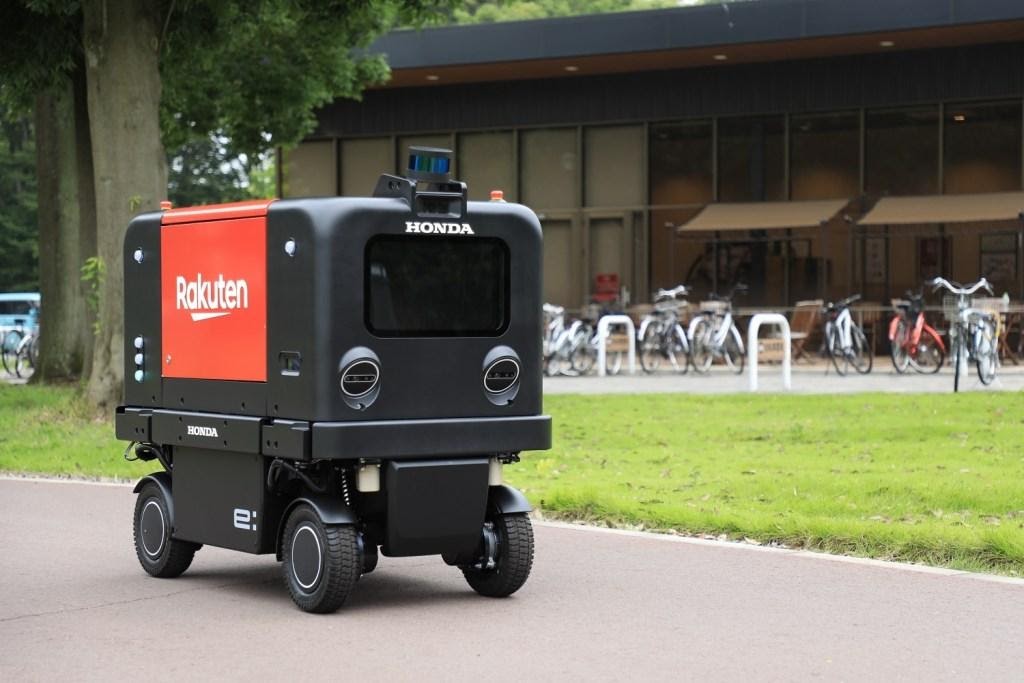
Another use case where UGV became a clear choice was during the recent pandemic time. Rakuten built a UGV based solution enabling delivery of items to customers in a resort keeping social distance norms. You can watch the video here:
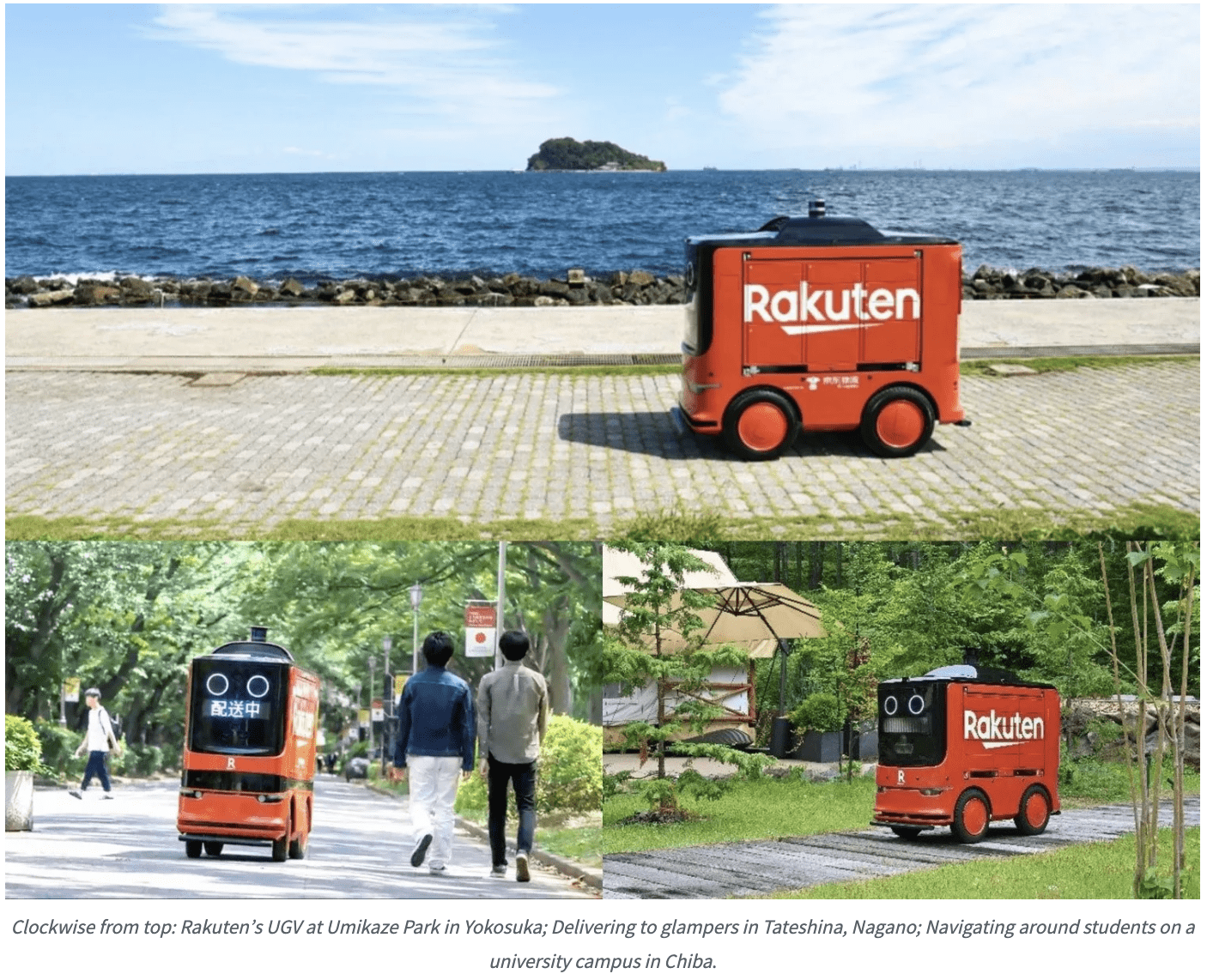
Delivery Drone innovation lies at the heart of e-commerce cutting edge next-gen solutions at Rakuten. From February to March 2020, Rakuten did a successful trial of drone delivery of groceries to a remote mountainous location in Iwate Prefecture, where many elderly residents struggle to go shopping for food. The trial flights in Iwate were fully autonomous, taking advantage of the technologically advanced “Tenku” drone. Everything from taking off to arrival at the destination is activated with just one push of a button.
You can watch the video here:
The ongoing pandemic has served as an accelerator for innovation in this space Between January 6 to January 22, 2021, Rakuten offered a limited-time unmanned drone delivery service to Shima City in Mie Prefecture, as the first paid delivery service to remote island residents in Japan. The drone delivered goods from a supermarket in the city to Masaki island, making a round trip of approximately 11km. Since travelling between the island and the mainland has become more challenging under the pandemic situation, a new form of contactless delivery was realized to meet new lifestyle needs.
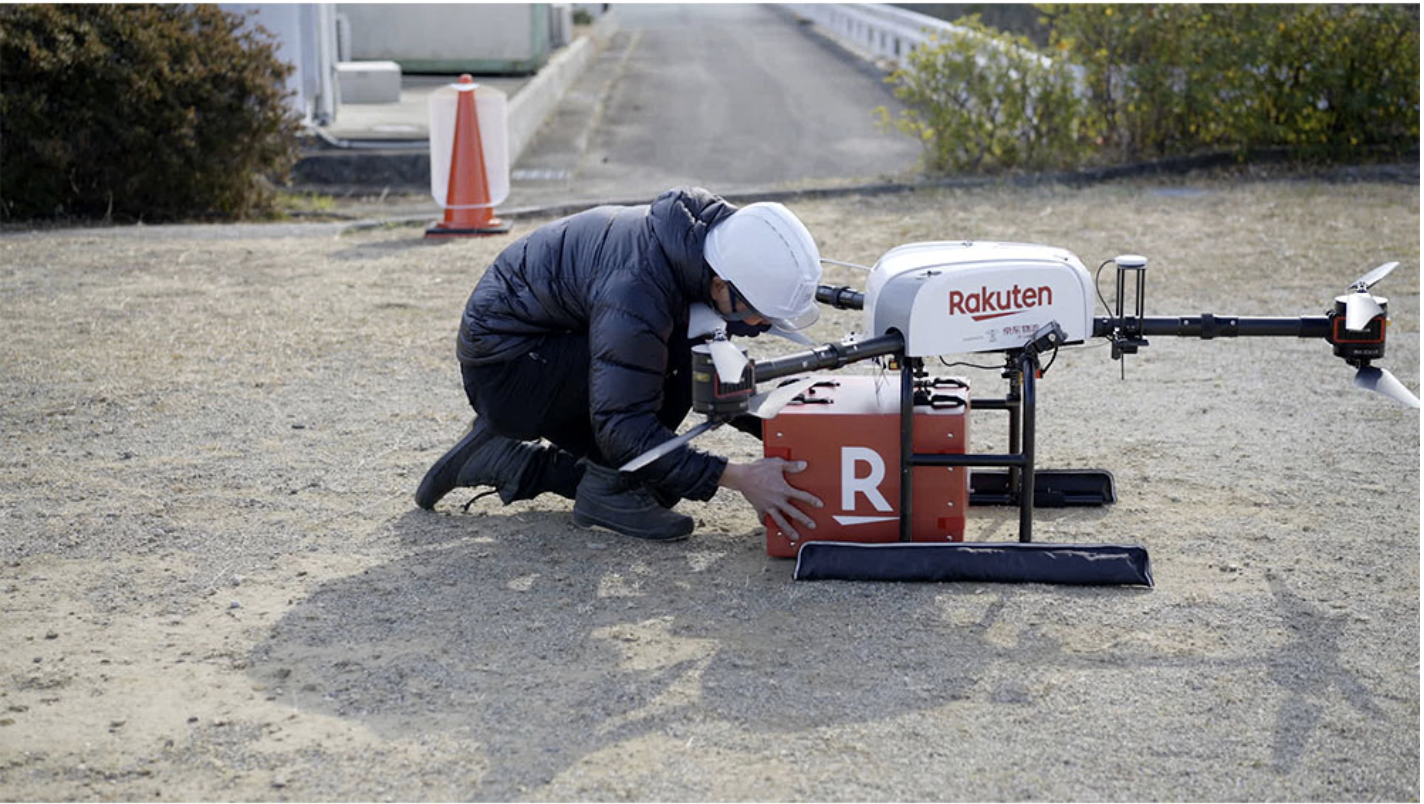
In the future, Rakuten aspires to create revolutionary “Drone highways”. Rakuten is collaborating with TEPCO Ventures and Japanese mapping company Zenrin Co., Ltd., who are developing a drone highway concept utilizing TEPCO Group’s electrical infrastructure and Zenrin’s 3D maps of the sky. Move aside self-driving cars; we will soon have self-navigating drones crisscrossing our skies!
Now that AI is becoming all-pervasive and being applied in many areas in the e-commerce shopping journey, where earlier humans used to do the job, it is all the more important for us as human beings to focus on contribution to society by creating value through innovation and entrepreneurship, true to Rakuten Group’s mission.




